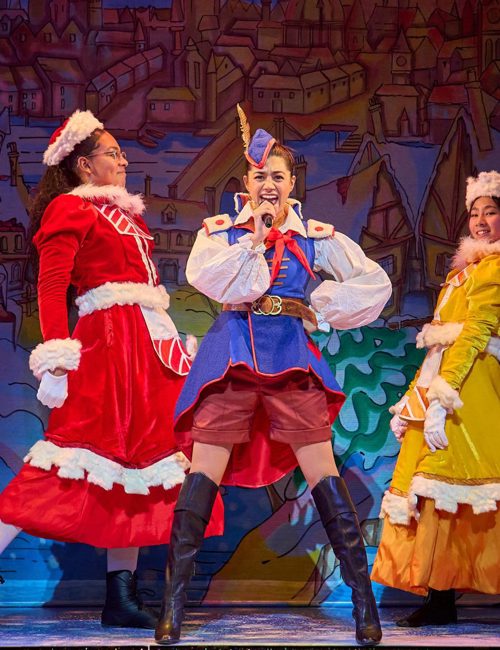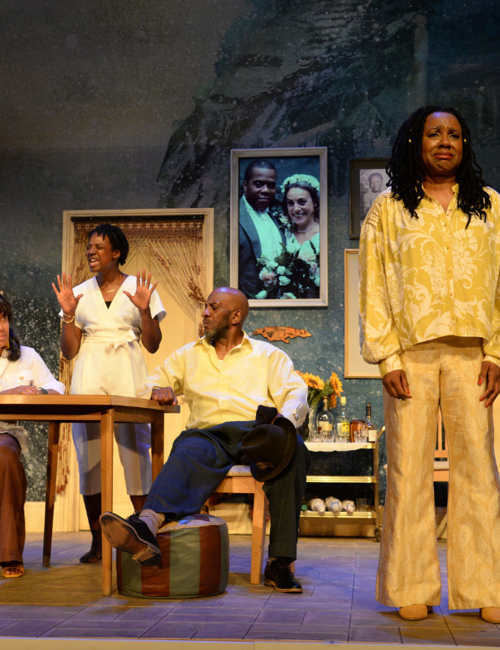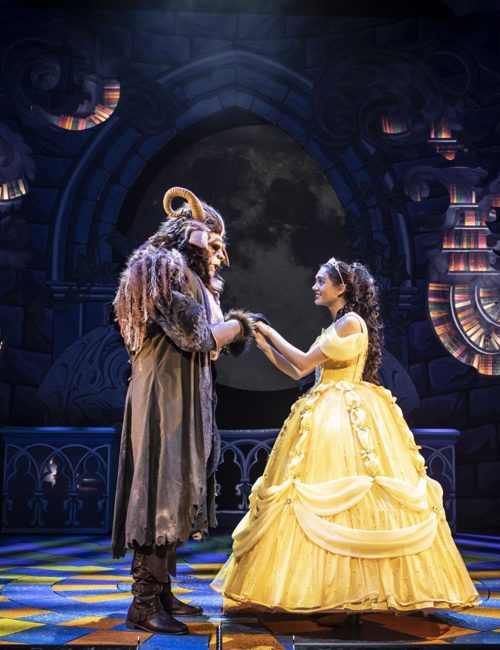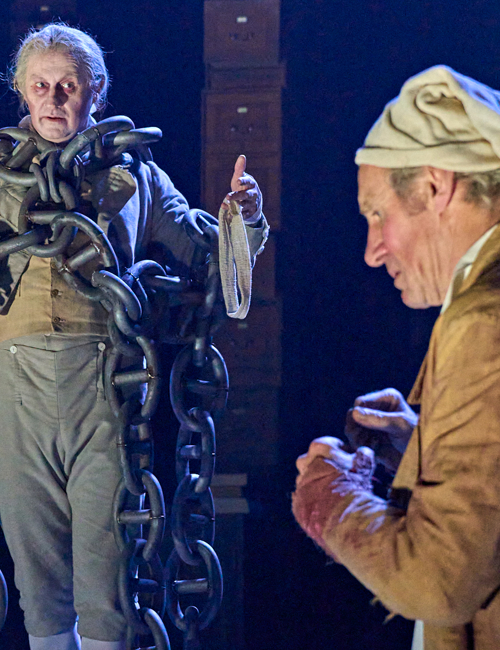Nottingham Playhouse: into its sixtieth year, and more than just the building that wears the Sky Mirror like a big earring

Nottingham Playhouse celebrates its diamond anniversary this year with some theatrical gems. Though sixty pages would be more befitting to celebrate its achievements, here’s the basic history in sixty words: The Playhouse is a proscenium theatre with an auditorium seating 750. Launched in 1948 in a converted cinema in Goldsmith Street it quickly built up a keen local following and national acclaim under Andre Van Gyseghem. It relocated to Peter Moro’s design in 1963, the award-winning Artistic Director is Giles Croft, 100,000 people visit yearly, and the Sky Mirror’s outside…
We wondered at first whether to mention the Anish Kapoor sculpture, as we thought it might be akin to mentioning the tram stop when doing a feature on the Theatre Royal. Yet within ten minutes of talking to Communications Manager Derek Graham it becomes clear that Sky Mirror is an integral part of the theatre's life, bringing in new visitors from the visual arts sector in much the same way that recent folk productions have lured musical audiences into the leafy nook of one of Nottingham’s hidden gems. It's about survival, and the bastards out there have sharp teeth.
According to Graham, the move from the converted cinema was ‘a real step-up from a fairly small enterprise. The crucial thing for the playhouse was that the Arts Council stepped in and supported what was a very new venture in Post-War Britain. As long as they raised 4/5ths of the costs by public appeal, the Arts Council would chip in the rest’. As funding has changed, the Playhouse has had to find numerous ways to get the punters in, which is perhaps reflected in its anniversary programme. As Graham says, ‘the plays this season aren’t put on to reflect a particular celebratory theme. Really, it’s a very typical season for us in that it’s balanced, hopefully, with a classic drama in Macbeth, the pantomime for the family, and a play by a living writer in Vertigo. So we have new projects alongside well recognised titles’. Sounds like the artistic equivalent of a Cloughian midfield.
Perhaps inevitably, the slow removal of funding has, amongst other things, had an impact on the Playhouse ethos of being ‘about living writers, new work, commissioning plays and taking a few risks as well’. Though there is a grave financial risk in giving new blood a chance, they seem to be good to their word, recently running an entire season of new writers and plays. But how far can these boundaries be pushed if the Playhouse is to remain 'an open space for ideas’? Surely the Playhouse has some taboo subjects which it avoids so as not to alienate audiences? ‘I’m not sure playwrights are more conscious of offending,' says Graham, 'theatre programmers probably are, but if they believe in a project they’ll do it. Theatre is one of the spaces where you can really go into ideas and explore different points of view. A character on stage spouting a certain view doesn’t mean that the play is advancing that point of view. Theatre is one of the places where you can examine uncomfortable feelings.’
It is perhaps inevitable then that the Playhouse also has to put on commercial ventures such as Tracey Beaker in order to compete with the Theatre Royal. We can’t hold that against them and besides, it is a formula which has worked on the screen and the page, so why not have a bit of the cake? ‘There is a commercial incentive but it’s also about trying to find a story that can connect with today’s new generation of theatre goers. This also fit into another strand we try to achieve each year of a family show for summertime’.
It is perhaps this struggle to adapt which is the real story of the sixty years of the Playhouse. Take their educational project Roundabout, which has created over 250 plays in thirty years and taken tough topical issues out into the community. This partnership has been subject to the kind of restructuring you would expect from a venture utilising multiple revenue streams which have been cut and reinstated over the years, creating as much drama off stage as on it. In 2000 this culminated in the Council cutting its grant and the instant loss of 40% of their revenue. Fees went up to compensate which inevitably meant some schools lost out. Those in rural locations were hit hardest as they don’t have the option of sharing costs with neighbouring schools. These are not the signs of a classless society but rather the massive impact one small change has on the cultural infrastructure of regional theatre. Indeed, just as it was the downward spiral of bombs from the sky which created public investment into the arts and made the Playhouse happen it is now the rising cost of living and soaring interest rates which begs for investment again. Credit crunch, pint at lunch, artistic hunch?
To its credit the Playhouse has adapted and shifted wherever necessary and has stayed true to its founding principles of nurturing new talent. The Theatre Writing Partnership for example was set up in 2001 to commission at least one new production of their own a year. This year, Amanda Whittington was the recipient, seeing her Satin ‘n’ Steel grow from a fifteen-minute short to a full-length play in February. If you want to see the Playhouse put on more world premieres over the next sixty years then get down and support it. If you want to be part of the new wave of writers then get your pens out and send the work off.
We have a favour to ask
LeftLion is Nottingham’s meeting point for information about what’s going on in our city, from the established organisations to the grassroots. We want to keep what we do free to all to access, but increasingly we are relying on revenue from our readers to continue. Can you spare a few quid each month to support us?




